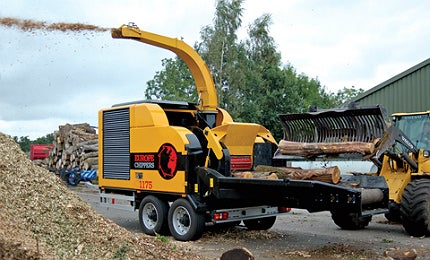The Nacogdoches power plant is a wood-fired power-generation facility located in Sacul, Texas, about 230 miles from Austin. Southern Power, a subsidiary of Southern Company, bought it from American Renewables on 9 October 2009.
The plant has an installed capacity of 100MW, sufficient to power 70,000 homes, and can offset up to 300,000t of carbon each year. The project’s ground-breaking ceremony took place in November 2009. The commercial operations of the biomass plant began in June 2012. It is the largest biomass-fuelled electricity-generating facility in the US and won the Best Bioenergy Project title for 2012, at the Power-Gen international conference.
The project is a part of Texas’s goal to generate 30% of Austin’s electricity through renewable sources by 2020. To achieve its objective, state-owned Austin Energy had signed a 20-year power purchase agreement with Nacogdoches Power, a joint venture of American Renewables, for $2.3m on 29 August 2009.
The plant cost approximately $475m to $500m. The project will earn renewable energy credits under Texas laws and public utility commission rules, and help meet 5,880MW of the renewable generation target by 2015, as outlined in the Texas Senate Bill 20 passed in July 2005.
Nacogdoches power plant project details
The Nacogdoches power plant is built on a 165-acre site surrounded by forest and wood-processing facilities. Waste wood for the plant is procured from the surrounding area within a 75-mile radius.
The plant houses a wood-handling feed system, wood-fired system generator, a condensing steam turbine generator with an evaporating cooling water and auxiliary support equipment. It employs the latest boiler and emissions control technology.
The steam turbine generator is a bubbling fluidised bed (BFB) boiler, equipped with particulate emissions abatement. The plant also deploys a selective non-catalytic reduction (SNCR) system to control NOx.
Developing the wood-fired power-generation facility
The project was conceived by Energy Management Inc. and Bay Corp. Holdings when the companies jointly purchased an obsolete gas-fired plant. The joint venture was named Nacogdoches Power.
In October 2008, Tyr Energy joined Nacogdoches Power to form American Renewables to build and operate biomass generation plants. Tyr Energy provided the development capital for Nacogdoches Power. EPC contracts and necessary permits were obtained by March 2007.
Contracts awarded by Southern Power
Southern Power appointed Fagen for the engineering, procurement and construction of the Nacogdoches power plant. Minneapolis-based Zachry Engineering was sub-contracted by Fagen to provide overall site design, balance of plant engineering and design coordination.
Fagen joined Charlotte’s Metso Power, Mitsubishi Power Systems Americas and Wolf Material Handling Systems for the project completion.
Metso Power supplied, erected and commissioned the biomass boiler with BFB.
Mitsubishi Power Systems Americas, a subsidiary of Mitsubishi Heavy Industries, manufactured the steam turbine.
Wolf Material Handling Systems was responsible for the design, engineering, supply and commissioning of the biomass fuel-handling system, which included receiving trucks loaded with waste wood, processing, storage, reclaiming and delivery of fuel to the boiler. Prime Acres is the first fuel load supplier of the plant.
Texas’s power market and high demand
Texas leads the nation in fossil fuel and crude oil reserves. It has a quarter and three tenths of the total oil and natural gas reserves, respectively, in the US. It also has the potential for renewable energy generation, with wind, solar and biomass resources.
Texas produces and consumes more electricity than any other state in the US. It has a high per capita residential use, due to the high demand for electric air-conditioning during summer months and electric heaters in the winter.
Despite large interstate electricity imports, Texas’s power grid is isolated from the integrated power systems catering for the eastern and western states, and, as a result, the state’s ability to import and export electricity is hampered.
To overcome the situation, Texas has adopted a law that requires, as of 2005, five percent of the state’s total demand (that is 5,880MW) to be generated from renewable sources by 2015. The new law also sets a target of 10,000MW of renewable generation by 2025, including 500MW from non-wind generation sources.
Related content
Silver Star 1 Wind Farm, Texas, United States of America
The Silver Star 1 wind farm added another 60MW to Texas’ increasing renewable power supply. Silver Star 1 is located 80 miles southwest of the Dallas/Fort Worth metropolitan area.
Buffalo Gap 2, Texas, United States of America
AES started commercial operation of the 233MW Buffalo Gap 2 wind farm expansion near Abilene, Texas in August 2007.







.gif)
